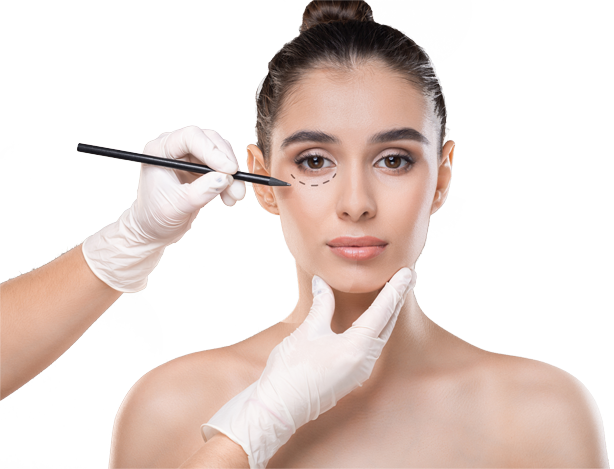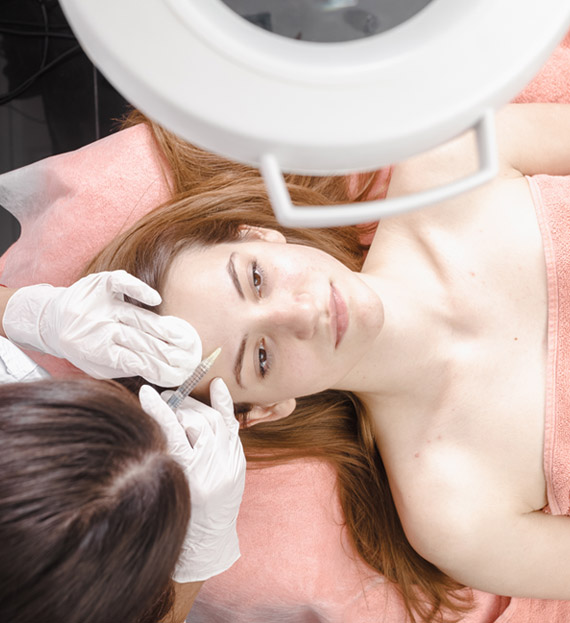Texture improvement
Most Popular Procedures
Texture improvement is a term used to describe the process of making the skin’s surface smoother, more even, and more radiant. There are many factors that can affect the texture of the skin, including age, sun exposure, and genetics. Some common treatments and techniques that can help improve skin texture include:
Exfoliation: Exfoliating the skin helps to remove dead skin cells, which can make the skin appear dull and rough. Regular exfoliation can help to reveal smoother, brighter skin.
Moisturizing: Keeping the skin well-hydrated can help to improve its texture and make it appear smoother and softer.
Chemical peels: Chemical peels use a chemical solution to remove the top layer of skin, which can help to improve the appearance of fine lines, wrinkles, and uneven skin tone.
Microdermabrasion: Microdermabrasion is a non-invasive procedure that uses a special device to exfoliate the skin and remove the outer layer of dead skin cells. This can help to improve the appearance of fine lines, wrinkles, and age spots.
Laser resurfacing: Laser resurfacing uses a laser to remove the top layer of skin and stimulate collagen production, which can help to improve skin texture and reduce the appearance of fine lines and wrinkles.
Facial massage: Facial massage can help to increase circulation, which can promote healthy skin and improve its texture.
The best treatment for improving skin texture will depend on the individual’s skin concerns and goals. It’s important to consult with a qualified skincare professional to determine the most appropriate treatment for your needs. Additionally, adopting a healthy skincare routine that includes regular cleansing, moisturizing, and sun protection can help to improve the overall texture and appearance of the skin.
Faq
Frequently Asked Questions
A. The amount of time it takes to see results from texture-improving treatments can vary depending on the treatment and the individual's skin concerns. Some treatments, such as chemical peels or microdermabrasion, may produce immediate results, while others, such as laser resurfacing or facial massage, may take several weeks or months to see noticeable improvement.
A. Some texture-improving treatments, such as laser resurfacing or chemical peels, may not be appropriate for individuals with certain skin types or conditions. It's important to consult with a qualified skincare professional to determine if a particular treatment is safe and appropriate for your skin.
A. There are many over-the-counter products available that can help to improve the texture of the skin, such as exfoliating scrubs or moisturizers. However, it's important to choose products that are appropriate for your skin type and to follow the instructions carefully to avoid irritation or other adverse effects.
A. The frequency of texture-improving treatments will depend on the individual's skin concerns and the type of treatment. Some treatments, such as facial massage or regular exfoliation, can be done on a daily or weekly basis, while others, such as chemical peels or laser resurfacing, may only be done once or twice a year. It's important to discuss the appropriate frequency of treatments with a qualified skincare professional.
A. Like any cosmetic treatment, there are risks associated with texture-improving treatments. These can include irritation, redness, or allergic reactions. It's important to discuss the risks and benefits of any treatment with a qualified skincare professional before undergoing the procedure.
A. texture-improving treatment to determine the most appropriate treatment for your needs and to avoid any potential risks or complications. Additionally, maintaining a healthy skincare routine that includes regular cleansing, moisturizing, and sun protection can help to improve the overall texture and appearance of the skin.






